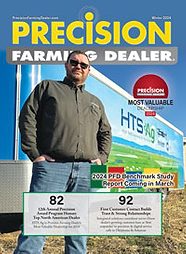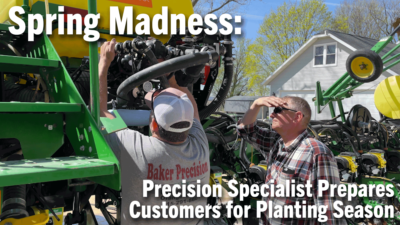With so many new agricultural technologies coming on the market, how do you evaluate which products to invest in for your farm?
Chris Gaesser grows corn, soybeans and rye seed near Lenox, Iowa. His first began using yield monitors in 1996. Since then he has invested in many technologies including autosteer, swap control, row shut-offs, mapping technology, and variable rate application. He also began utilizing data analysis, and applications for tracking hauling.
Gaesser first evaluates new technology based on what he’s using it for. “Sometimes, it’s a matter of does it make our life easier, is it more convenient, and can we get something done faster? That’s worth something,” Gaesser said. “Other times it’s: is it actually making us money and is there a return on the investment we’re making?”
For example, auto-steer doesn't make him more money, but it allows for less mental fatigue. Auto-steer allows Gaesser to run longer hours and get things done in a more timely manner. However, a product like variable-rate or swath control can actually save input costs, and he can put a number to that.
“There’s a lot of cost-benefit analysis, especially with the things that are more convenient or create less stress. Is the benefit you gain worth how much you’re paying?” Gaesser said.
Gaesser feels it’s important to evaluate new technology for more than one year, especially if it’s an item that you have to run in a field. “You might get good results from a year, but the weather and other factors change from year to year,” Gaesser said.
He likes to test out new technology for three years before completely investing in it. “We tested variable-rate nitrogen on a chunk of our acres for four or five years before we were convinced that it was doing what we wanted it to do,” Gaesser said.
So what are the keys to putting a number to a precision technology investment?
“We keep really good records on what we spend. For things that are saving us on inputs or increasing yields, that’s easy to tell,” Gaesser said. “We can just run the numbers and tell definitively if we’re making money from it.”
However, not it’s not that easy for all products. “For convenience products, it becomes how you value time and stress level. Is what you’re paying enough of a reduction of stress or helps you get things done faster to make it worth it?”
For Gaesser, the chaotic weather patterns in recent years that have resulted in shorter windows to get in the field, have him put a higher value on products that will allow him to get things done faster.
“There will be years that if we can break even on the technology, we’re doing good to have it in years that it does better. In general, as long as you're making money four out of five years, you’re doing ok,” Gaesser said.
Gaesser encourages others that are looking to invest in new technology to start small. “Start on a small number of acres. A trap we fall into is where we think it works and we do it on all the acres,” Gaesser said. “Then, if you have a problem or it doesn’t work like you thought, you’ve messed up a lot of acres instead of just a few.”
He also advises to get help and ensure you understand the product. “Don’t just guess at things or think you’ll just figure it out as you go. If you have help and understand from the beginning, you’ll do much better,” Gaesser said.
Sometimes it can be better not to jump on to new technology right away. While Gaesser doesn’t want to discourage farmers, the reality is, sometimes it’s better to wait until the technology is proven.
“While I feel it’s good to try things and be on the cutting edge, there are always bugs that have to be worked out with new technology,” Gaesser said. “Especially if it affects a big part of your operation, tech problems can really shut you down. I’ve been bitten by that before.”






Post a comment
Report Abusive Comment